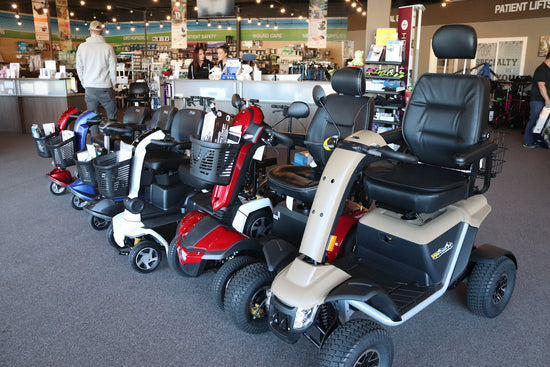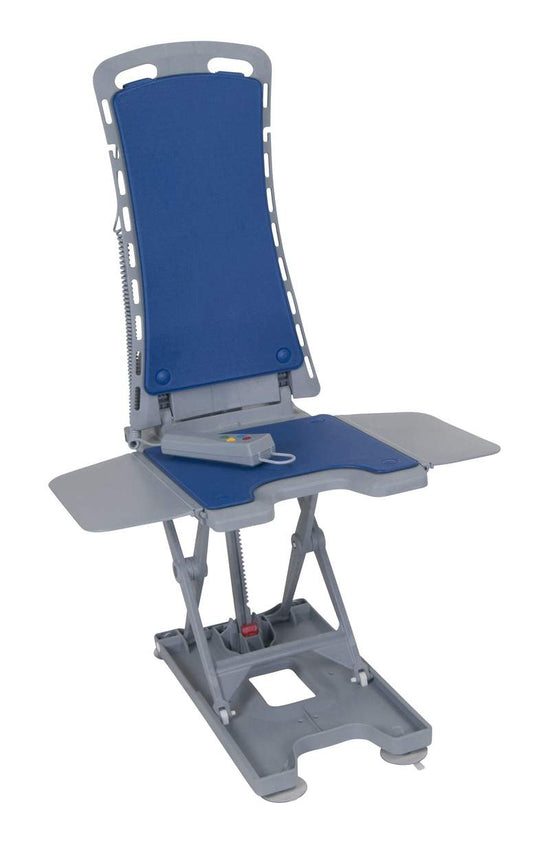Ensuring the longevity and effectiveness of your medical supplies is not just about storage; it also hinges significantly on regular maintenance and proper cleaning. These practices are vital for healthcare professionals and patients alike, as they directly impact the safety and success of medical procedures.
In the realm of healthcare, where precision and cleanliness are paramount, understanding the nuances of caring for your medical equipment can make a substantial difference. This guide aims to shed light on practical tips and best practices for keeping your medical supplies in top-notch condition, ensuring they perform their functions efficiently and safely.
By adopting these maintenance and cleaning routines, you can extend the life of your equipment, save on costs in the long run, and most importantly, uphold the highest standards of patient care.
Understanding the Importance of Sterilization
Sterilization is not just a best practice in healthcare settings; it's a critical safeguard against the transmission of infectious diseases. This process eliminates all forms of microbial life, including bacteria, viruses, fungi, and spores, from medical supplies and surfaces, ensuring they are safe for patient contact. The importance of sterilization cannot be overstated, as it directly impacts patient outcomes and the overall effectiveness of medical procedures.
In environments where the risk of infection is high, such as operating rooms, intensive care units, and dental surgeries, sterilization becomes paramount. It protects not only patients but also healthcare workers from potential cross-contamination and healthcare-associated infections (HAIs).
Implementing rigorous sterilization protocols ensures a sterile field during procedures, minimizing the risk of post-operative infections and contributing to faster patient recovery times. Understanding and adhering to these sterilization practices is essential for maintaining the highest standard of care in any healthcare setting.
Daily Cleaning Routines for Medical Instruments

In the intricate world of healthcare, the cleanliness of medical instruments is not just about aesthetics; it's a fundamental aspect of patient safety and care quality. Establishing daily cleaning routines for these tools is essential to prevent the spread of infections and ensure their optimal performance. Here’s how healthcare professionals can maintain the highest standards of hygiene with an effective daily cleaning routine:
Pre-Cleaning Phase:
- Immediately after use, remove visible debris and organic matter from instruments under running water. This step prevents the drying of bodily fluids and reduces the risk of biofilm formation.
Manual Cleaning:
- Use mild detergent and soft-bristled brushes to clean all surfaces thoroughly. Pay special attention to grooves, joints, and hard-to-reach areas where contaminants might hide.
- Rinse instruments under running water to remove any detergent residue.
Disinfection:
- Submerge the tools in a disinfectant solution, ensuring they are fully covered, for the time specified by the manufacturer. This step is crucial for killing any remaining microorganisms.
Drying and Inspection:
- After disinfection, dry instruments with a clean, lint-free cloth or air dry them. Moist environments can harbor bacteria, making this step vital.
- Inspect each instrument for damage or wear and ensure they function correctly before storage.
Proper Storage:
- Store cleaned and disinfected instruments in a dry, dust-free environment. Use protective covers to safeguard them from environmental contaminants.
Adhering to these daily cleaning routines ensures that medical instruments remain sterile, functional, and ready for the next use. It’s a critical component of patient care that upholds both safety and efficiency within healthcare practices.
Scheduled Maintenance Checks
Scheduled maintenance checks are a cornerstone of healthcare equipment management, ensuring that medical supplies and instruments operate efficiently and safely. These periodic reviews help identify potential issues before they escalate into costly repairs or, worse, compromise patient care. Here's why scheduled maintenance is indispensable:
- Preventive Care: Regular checks can prevent equipment failures by identifying wear and tear early. This proactive approach minimizes downtime and extends the lifespan of medical supplies.
- Safety Assurance: Maintenance routines ensure that all equipment functions at its best, reducing the risk of malfunctions that could lead to patient or staff injuries.
- Compliance and Standards: Healthcare facilities must adhere to strict regulatory standards. Scheduled maintenance checks help ensure compliance with these regulations, avoiding legal and accreditation issues.
- Cost Efficiency: By catching minor issues early, facilities can avoid the significant costs associated with major repairs or replacements.
Incorporating scheduled maintenance into the healthcare facility’s routine is not just about ticking a box; it's about ensuring the highest standard of care through reliable, safe, and effective medical supplies and equipment.
Handling and Usage Best Practices
Adopting best practices for the handling and usage of medical supplies is crucial in maintaining their integrity and ensuring they serve their intended purpose without compromising patient safety. Here are key guidelines to follow:
- Proper Training: Ensure all healthcare personnel are thoroughly trained in the correct handling and usage of medical supplies. This includes understanding the specific functions of each item, as well as the manufacturer’s instructions for use.
- Use as Intended: Always use medical supplies for their designated purpose. Misuse can lead to equipment damage, reduced effectiveness, and potentially harm patients.
- Gentle Handling: Handle all medical supplies with care to avoid physical damage. Instruments should be transported in secure containers to minimize the risk of dropping or bumping.
- Avoid Overloading: When using sterilization equipment or washers, avoid overloading. This ensures that all items are properly cleaned, disinfected, or sterilized, and extends the lifespan of both the supplies and the equipment.
- Immediate Reporting and Segregation: If a supply or instrument is found to be defective or damaged, report it immediately and remove it from the active inventory. This prevents accidental use and potential harm.
- Regular Inspection: Before use, inspect each item for signs of wear or damage. This is particularly important for items that are reused, such as surgical instruments.
Following these best practices for handling and usage not only prolongs the life of medical supplies but also supports a safe environment for both healthcare providers and patients. By embedding these practices into daily routines, healthcare facilities can ensure that their medical supplies are always in optimal condition and ready for use.
Disinfection vs. Sterilization
In the realm of healthcare, maintaining a sterile environment is paramount for patient safety. Two critical processes in achieving this are disinfection and sterilization. While both are essential in infection control, they serve different purposes and are used under varying circumstances. Understanding the distinction between these methods is key to their effective application.
Disinfection involves using chemical agents or physical methods to eliminate most pathogenic microorganisms on surfaces or objects, except bacterial spores. This process is suitable for medical supplies that come into contact with the skin but not mucous membranes. Disinfection can be achieved through various levels:
- High-Level Disinfection: Kills almost all microorganisms, except some spores. Used for semi-critical items like endoscopes.
- Intermediate-Level Disinfection: Effective against most viruses, bacteria, and fungi, including Mycobacterium tuberculosis. Ideal for items like respiratory therapy equipment.
- Low-Level Disinfection: Eliminates most bacteria, some viruses, and fungi. Suitable for non-critical items that come into contact with intact skin, such as blood pressure cuffs.
Sterilization, on the other hand, is a more rigorous process that destroys all forms of microbial life, including bacteria, viruses, fungi, and spores. This method is reserved for critical medical instruments that enter sterile body areas or the vascular system, such as surgical tools and implants. Sterilization can be achieved through autoclaving, ethylene oxide gas, hydrogen peroxide gas plasma, and other technologies.
Choosing between disinfection and sterilization depends on the medical supply's intended use and the level of microbial control required. Implementing the appropriate method ensures the highest standard of patient care and infection prevention.
Dealing with Wear and Tear
Dealing with wear and tear is an inevitable part of managing medical supplies and equipment. Over time, even the most durable devices can exhibit signs of aging, affecting their performance and reliability. To ensure patient safety and the longevity of your medical assets, it's crucial to adopt strategies that mitigate wear and tear effectively.
Firstly, regular inspection is key. Vigilant monitoring allows for the early detection of potential issues, such as cracks, leaks, or functional irregularities. Addressing these problems promptly can prevent them from escalating into more significant concerns that could compromise patient care or necessitate costly replacements.
Proper maintenance routines cannot be overstated. Following the manufacturer’s guidelines for cleaning and servicing ensures that each piece of equipment functions optimally. Additionally, creating a maintenance schedule and adhering to it helps in preserving the equipment’s condition and extending its usable life.
Environmental factors also play a pivotal role in the wear and tear of medical supplies. Keeping devices in appropriate conditions, away from extreme temperatures, humidity, and direct sunlight, can significantly reduce the rate of degradation.
For healthcare providers in Redding, California, seeking comprehensive solutions for their home medical equipment needs, Everything Medical stands ready to assist. Offering a wide range of supplies and expert advice on maintenance and cleaning, Everything Medical is your partner in ensuring your medical equipment withstands the test of time and continues to deliver exceptional care.



